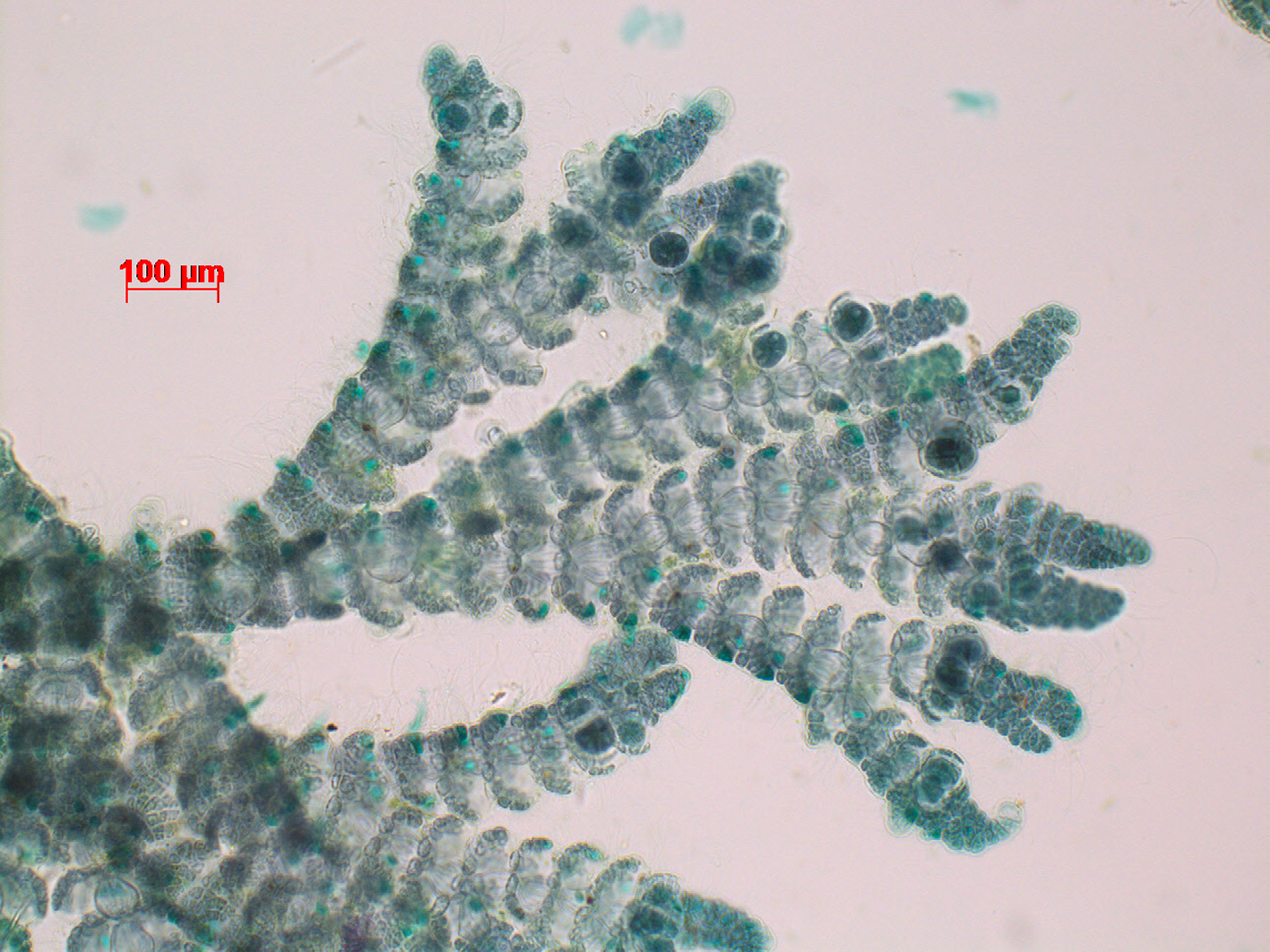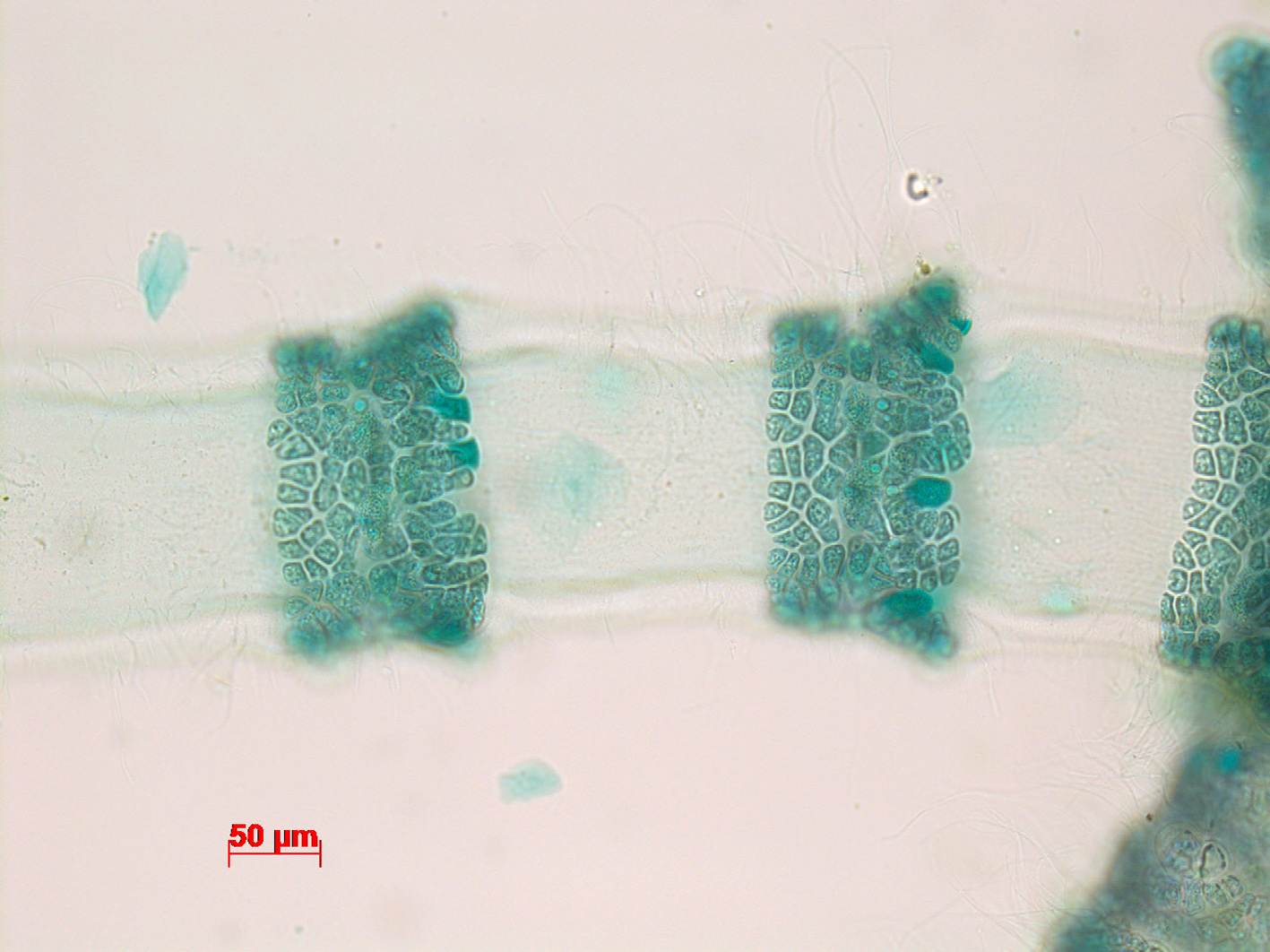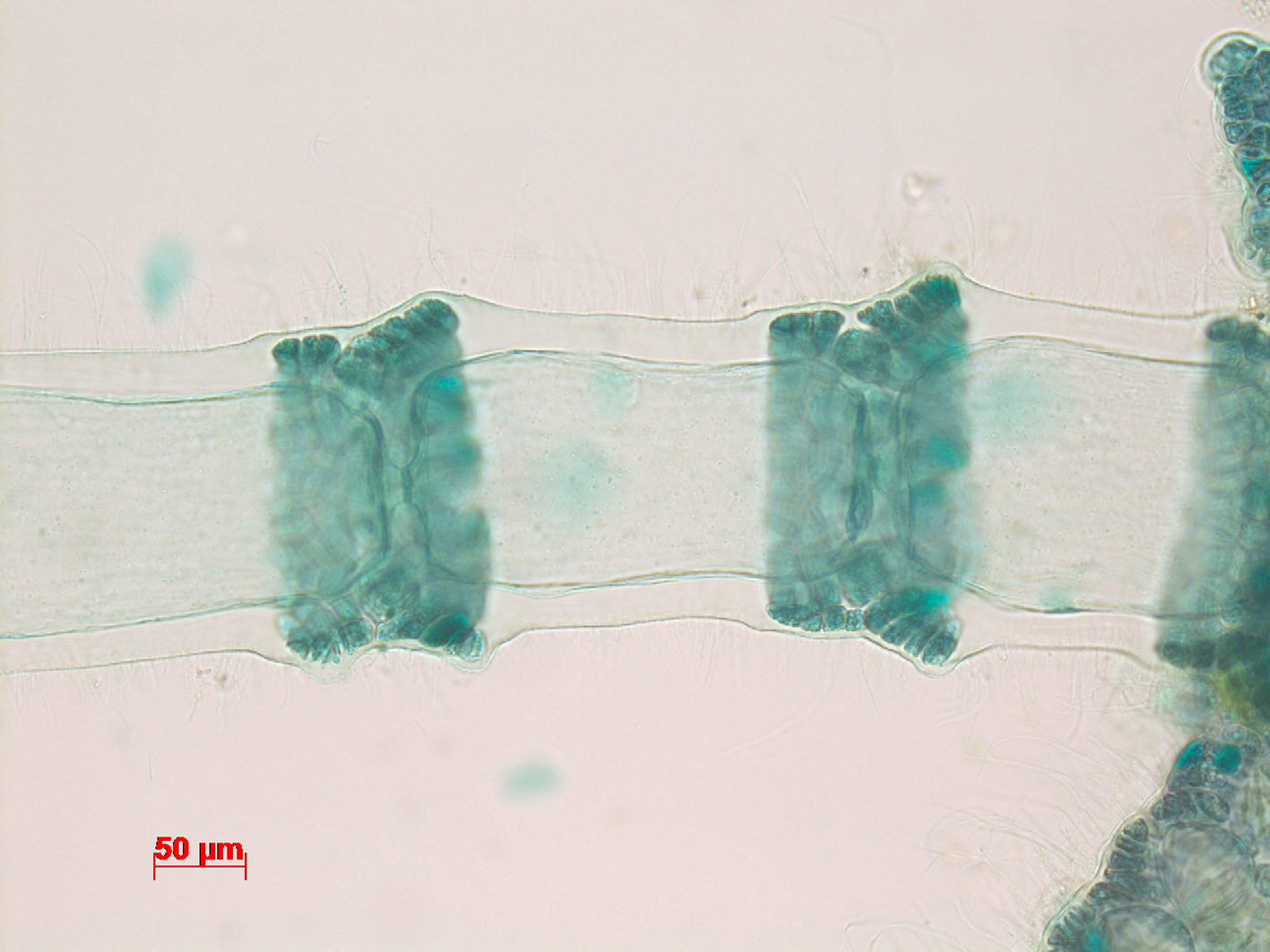Seaweeds of the South African South Coast


Order Ceramiales
Family Ceramiaceae
Gayliella papenfussiana ( = Ceramium papenfussianum Simons 1966: 159, fig. 2; pl. 2:1)
According to the morphological criteria of Cho et al. (2008), this species should belong to Gayliella, but no formal transfer has been made.
Plants up to at least 1.5 cm tall, with a strongly percurrent main axis, giving off laterals at intervals of 4-5 segments. Thallus apices only little incurved. Diameter of main axis to over 200 µm, the segments in mature parts stretching to ca. 600 µm, or 4 times the diameter, mainly naked, the corticating bands remaining relatively narrow, with straight upper and lower limit. Segments with 7(-8) periaxial cells, each producing two acropetal and one basipetal corticating initial, with a fairly strict separation of acropetal and basipetal cortication, the periaxial cells remaining partly exposed. Acropetal cortication about three cell layers, usually with a number of prominent gland cells (about one for each periaxial cell). Basipetal cortication about two cell layers.
Tetrasporangia in a number of subapical segments, in optimal development one per periaxial cell, completely immersed, tetrahedrally divided, measuring ca. 50x40 µm, causing considerable swelling of the segment. Tetrasporiferous segments hardly develop the basipetal cortication.
Collections, ecology and regional distribution
Gayliella/Ceramium papenfussianum is primarily a west coast species and appears rare on the south coast (1-48). It differs from the partly overlapping G. dawsonii by the larger diameter of the main axis and the higher number of periaxial cells. (Both species have not formally been transferred to the genus Gayliella).
World distribution: South African endemic.
Type locality: Sea Point, Cape Town, South Africa (Silva et al. 1996).

Gayliella papenfussiana. 1. Microscopic habit (tetrasporangial). 2. Older segments (note gland cells). 3.Tetrasporangia. reproduced from Stegenga et al. (1997) (as Ceramium papenfussianum).

Gayliella papenfussiana ( = Ceramium papenfussianum) with tetrasporangia. Stained slide material, Tsitsikamma.

Gayliella papenfussiana (= Ceramium papenfussianum), cortex in older segments. Stained slide material, Tsitsikamma.

Gayliella papenfussiana (= Ceramium papenfussianum), cortex in older segments, different level. Stained slide material, Tsitsikamma.
References Gayliella papenfussiana
Simons, R.H. 1966. The genus Ceramium in South Africa. Bothalia 9: 153-168, 3 figs, 2 plates.
Silva, P.C., Basson, P.W. & Moe, R.L. (1996). Catalogue of the benthic marine algae of the Indian Ocean. University of California Publications in Botany 79: 1-1259.
Stegenga, H., Bolton, J.J. & R. J. Anderson. 1997. Seaweeds of the South African west coast. Contributions from the Bolus Herbarium 18: 655 pp.
Cite this record as:
Anderson RJ, Stegenga H, Bolton JJ. 2016. Seaweeds of the South African South Coast.
World Wide Web electronic publication, University of Cape Town, http://southafrseaweeds.uct.ac.za; Accessed on 07 December 2025.